Sailing through the Night Sky
When I was a kid I had an obsession with the solar system and astronomy. I read every book I could about the planets (Pluto included), all of my journal entries were related to space, and I wanted to be an astronaut.

But I had a problem. I had no idea where things were located in the sky. I had seen many constellation maps, but they just didn’t make sense to me.
What I knew about the night sky as a kid:
 |
VenusVenus is the brightest star in the sky, and can only be seen at dawn and dusk. My strategy was to find the brightest object in the sky. This usually ended when I found a bright slow moving airplane. |
 |
MarsOne key feature about Mars is that it has a slight red-orange tinge. I remember one winter night I thought I had found this red-orange planet, but there other stars in the sky that have a similar colour, so I was never sure. |
 |
The Big DipperThe Big Dipper has to be one of the most recognizable constellations in the Northern Hemisphere. It’s visible all year round. If you have found it once, you’ll always recognize it. |
 |
Orion’s BeltOrion’s Belt is another constellation group that is easily recognizable, probably thanks to Men in Black or Egyptian pyramid legends. It’s best seen in the winter sky. |
Constellation Maps
The Ancient Constellation Map didn’t make sense to me, so I thought I could make my own from scratch. My first task was to map all the stars on paper, then use my creativity to connect the dots for figures I thought made sense. This project didn’t last too long as it was impossible to map the night sky with the light pollution in Brampton. I am glad I didn’t waste my time because I have learnt two important lessons:
- Once you learn a constellation, you will always recognize it – personally, I find it difficult to not recognize the Big Dipper.
- You can use the stars and constellations that you know as a starting to point to hop to other stars.
Continue below and I’ll show you how you can find interesting stars and planets…
How to find the North Star
One of the myths about the Underground Railroad is that slaves would use the North Star as a guide to Canada. What is the North Star? The North Star is the only star in the sky that does not change its position. A constellation like the Big Dipper is visible throughout the year, but you may notice that it’s always on the run. In the spring it is above your head, while in the fall it is closer to the horizon. Not the North Star. It’s position is fixed in the night’s sky. It turns out this star is shining directly above the North Pole, which is why it always points north! That’s convenient for anyone looking to go to Canada from the US with a GPS.
The North Star isn’t very easy to find on its own, but you can locate it if you Follow the Drinkin’ Gourd:
- Locate the Big Dipper
- Follow the the 2 stars at the base of the gourd and to jump to the brighest star in that direction – the North Star
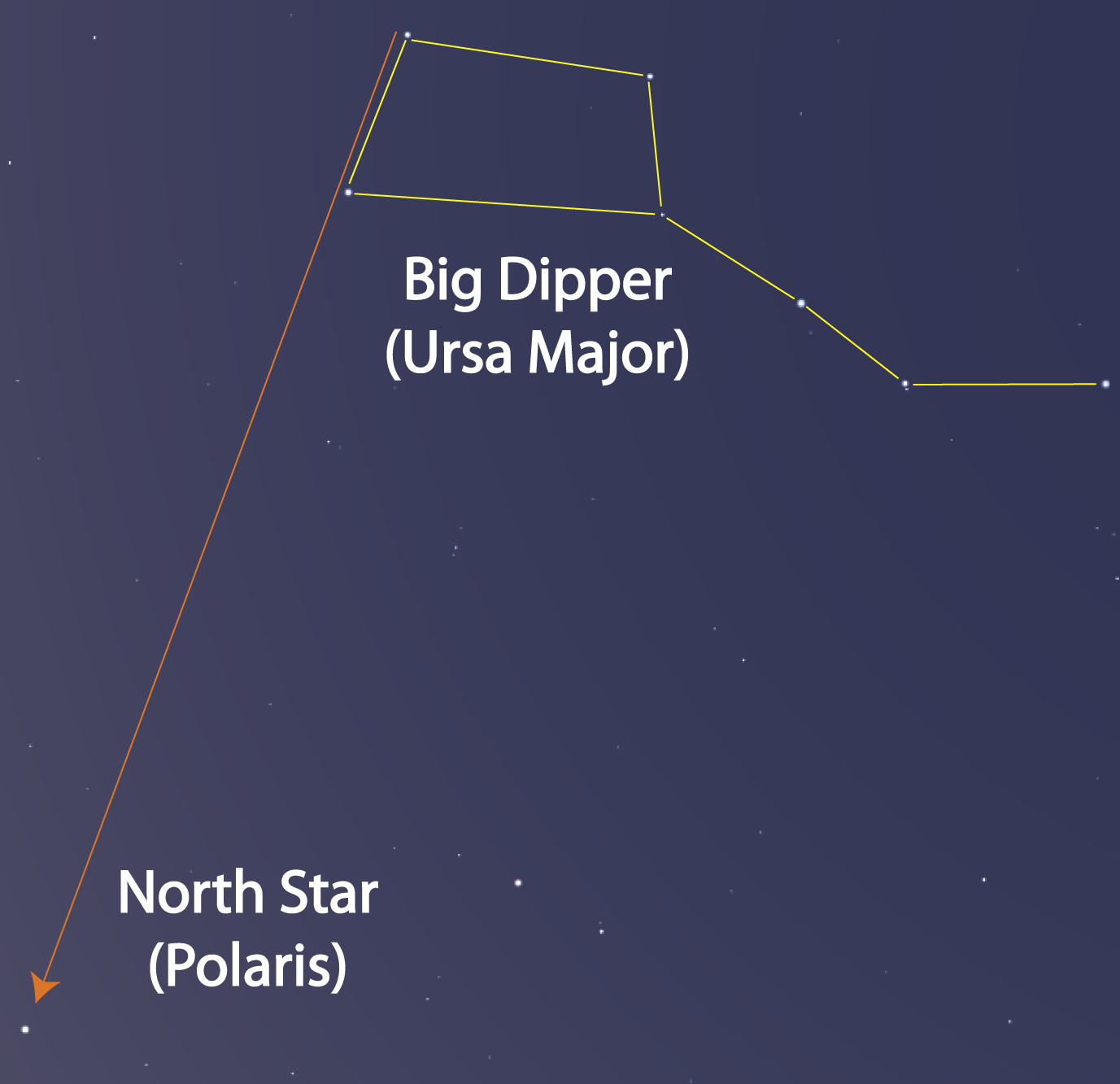
How to find Venus, Mars and Saturn in one night
Venus, Mars and Saturn are all visible in the sky shortly after the sun has set. You can easily spot them with the naked eye, and you may be able to see some faint features with a pair of binocoluars. Follow these steps  :
:
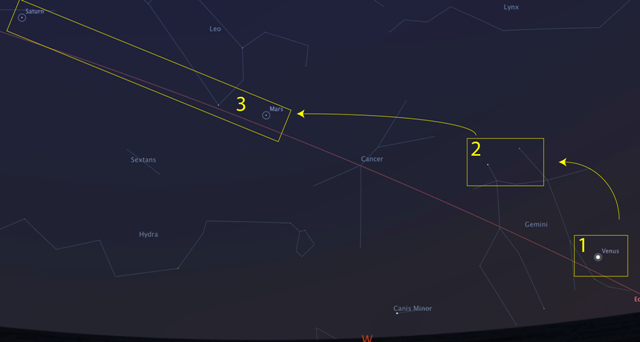
- Find Venus after the sun has set. You can’t miss its brightness! Spend a minute or two to be amazed by its beauty.
- After you’ve found and admired Venus, look higher in the sky and to the left to find Gemini. If you are in the city there may be too much light pollution to see the entire constellation, but the two heads of Gemini should be visible. If not, wait until the sky is darker.
- From the Gemini pair of stars, move further to the left to find three stars that form a line. The star on the left is Saturn, the middle is the brightest star in Leo, while Mars is on the right (Saturn and Mars have roughly the same brightness). You may have noticed that you skip over the Cancer constellation when you move from Gemini to Leo – Cancer’s stars are not very bright, especially in urban areas.
Here’s a smaller snapshot of where Mars and Saturn are located relative to the Leo constellation. Most of the stars in Leo are bright enough that you can recognize the constellation in a city.

Do you know what the red line passing through Venus, Mars, and Saturn is? I It’s a special astronomical line called the Ecliptic. This is the path the Sun moves across the sky. All of the plantes are found near the Ecliptic. Another interesting fact is that the 12 Constellations that circle the Ecliptic are the Zodiac signs.
Interesting Links
Planets iPhone App
One of my favourite iPhone Apps is Planets . It’s the one app you need for anything astronomy related. Here is an overview of the features: . It’s the one app you need for anything astronomy related. Here is an overview of the features:
|
||
 |
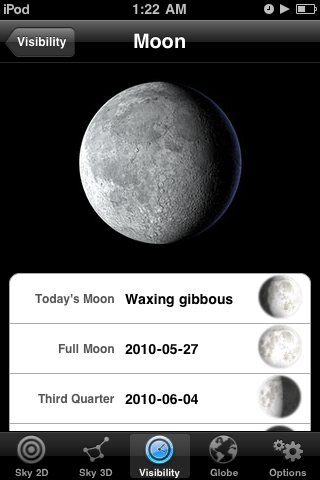 |
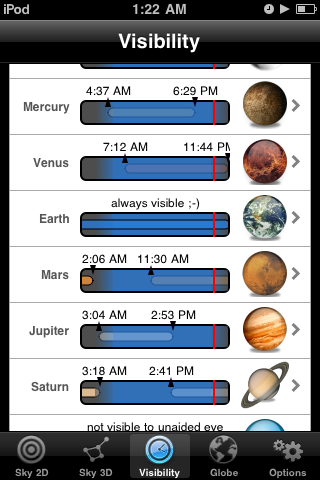 |
 |
 |
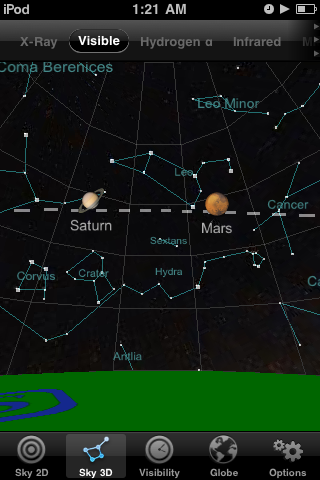 |

The constellation pictures in this post are from Stellarium. Stellarium is a very slick open source application that allows you to see the stars from the comfort of you home. You can customize a lot of things, such as seeing what the stars look like anywhere in the world, at any time. Maybe you see the sky in Nazareth at 0 AD? You can even see what the sky looks like from the Moon or Mars.
is a very slick open source application that allows you to see the stars from the comfort of you home. You can customize a lot of things, such as seeing what the stars look like anywhere in the world, at any time. Maybe you see the sky in Nazareth at 0 AD? You can even see what the sky looks like from the Moon or Mars.









Leave your response!